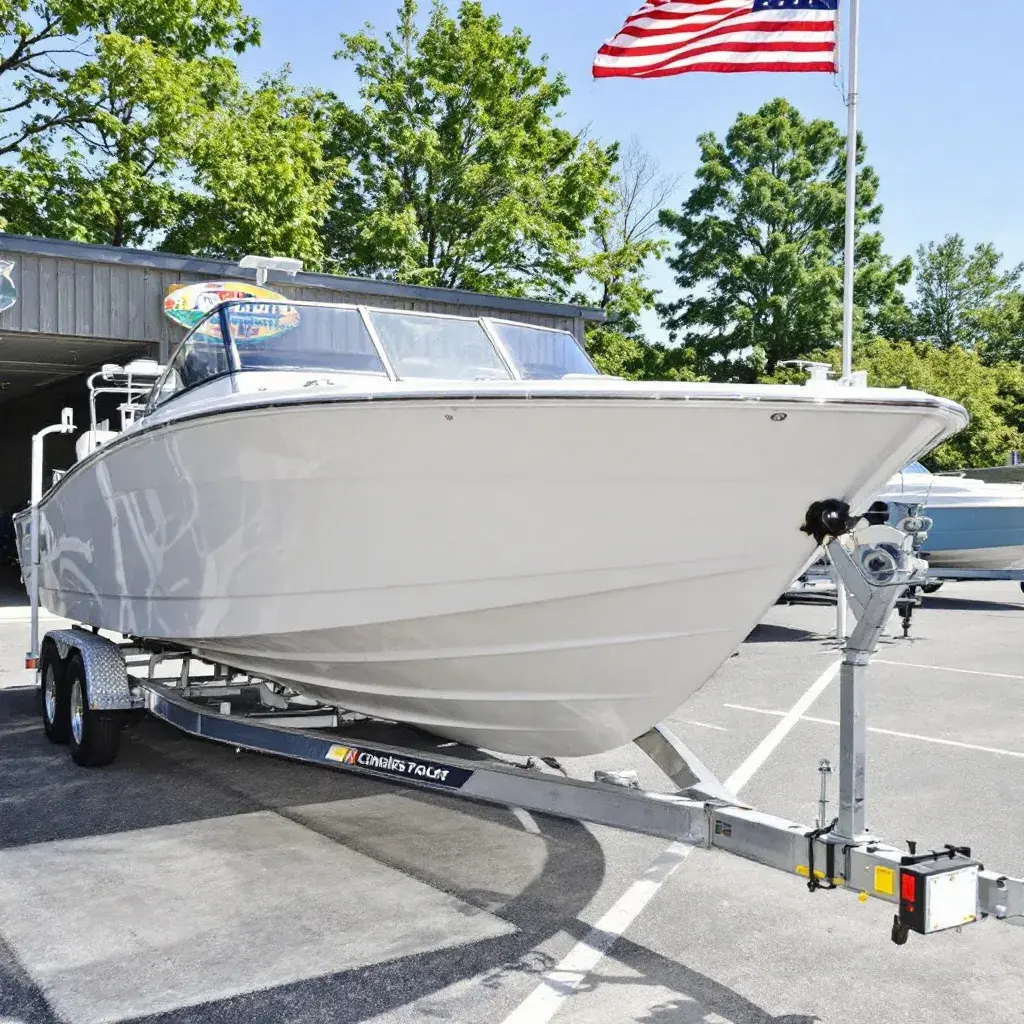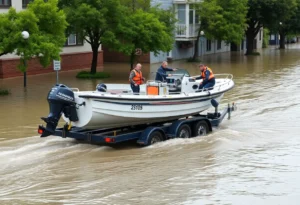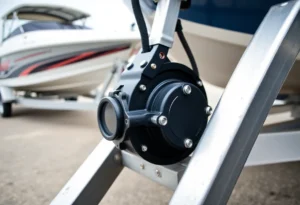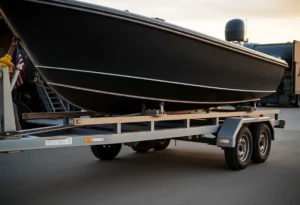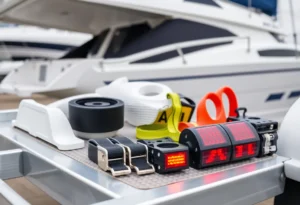Boat trailers are crucial for safely transporting your vessel from your driveway to the open waters. To ensure the best performance and security, it’s essential to understand the key components that make up a reliable boat trailer. Here’s a comprehensive checklist covering the must-have trailer parts, from axles to couplers, along with tips on inspecting and maintaining each.
1. Axles
The axle is the backbone of your trailer, carrying the weight of your boat and distributing it evenly across the wheels. Over time, axles can wear down due to the constant exposure to water and the stress of supporting heavy loads. When inspecting your axles, look for any visible damage or signs of rust and corrosion. Regular lubrication and maintenance can extend their life, keeping your trailer running smoothly.
What to Look For:
- Check for bends, dents, or visible damage.
- Ensure the axle is securely mounted and that there’s no wobbling.
- Keep an eye out for any signs of wear on the surrounding suspension components.
2. Tires and Wheels
The tires and wheels of your trailer are fundamental for smooth and safe towing. Because they endure extensive wear and tear, it’s important to inspect them frequently. Proper tire pressure is essential, as under-inflated tires can lead to blowouts, while over-inflated ones may reduce traction.
What to Look For:
- Inspect tread depth and watch for uneven wear patterns, which could indicate alignment issues.
- Check for cracks, punctures, or visible damage.
- Maintain proper tire pressure, as specified by the manufacturer.
3. Wheel Bearings
Boat trailers are particularly vulnerable to bearing wear due to frequent water exposure, which can lead to rusting. Wheel bearings facilitate the smooth rotation of the wheels and support the weight of your boat. Grease the bearings regularly to prevent them from overheating and breaking down, and consider investing in bearing protectors to keep moisture out.
What to Look For:
- Any grinding noise when the wheels turn, as this can signal a worn-out bearing.
- Check for visible rust or corrosion.
- Regularly clean and repack the bearings with fresh grease.
4. Lights and Wiring
Proper lighting is crucial, both for safety and compliance with legal regulations. This includes brake lights, tail lights, and turn signals. Water exposure and long trips can impact trailer lights, making routine inspection essential to ensure they’re fully functional before every journey.
What to Look For:
- Test each light before every trip to confirm they’re working correctly.
- Look for any exposed or frayed wires that could short out.
- Use waterproof connectors to protect wiring from corrosion and water damage.
5. Couplers and Safety Chains
The coupler is the connection point between your vehicle and the trailer. It’s vital to ensure the coupler is securely attached and properly sized to match your vehicle’s hitch ball. Safety chains serve as a secondary line of defense, providing added security in case the coupler disconnects while towing.
What to Look For:
- Make sure the coupler fits snugly on the hitch ball with no excessive movement.
- Check for cracks, rust, or wear on the coupler and safety chains.
- Inspect the chains for any weak links and ensure they’re properly attached.
6. Brakes
If your trailer is equipped with brakes, maintaining them is crucial for safe stopping, especially with heavier loads. There are various types of trailer brakes, including surge and electric brakes. Regular inspection helps prevent any braking issues, which could lead to dangerous situations on the road.
What to Look For:
- Inspect brake pads and rotors for wear, and replace them when necessary.
- Test the braking system for smooth operation.
- Look out for signs of rust or corrosion that might impact performance.
7. Bunks and Rollers
The bunks and rollers support your boat on the trailer, helping to keep it stable and prevent damage during loading and unloading. Over time, these parts can wear down, especially if the trailer is frequently used in saltwater. Regularly inspecting the bunks and rollers ensures that your boat remains secure during transport.
What to Look For:
- Check for cracks, dents, or worn areas in the rollers.
- Ensure bunks are securely attached and that the carpeting or padding isn’t frayed.
- Replace damaged rollers or worn-out carpet as needed.
8. Winch and Strap
The winch and strap are responsible for pulling the boat onto the trailer and keeping it secure. An unreliable winch or frayed strap can make loading and unloading challenging and could even lead to accidents. Regularly inspect these parts to avoid any mishaps during boat loading.
What to Look For:
- Inspect the strap for fraying, cuts, or weak spots, and replace it if damaged.
- Test the winch to make sure it operates smoothly without excessive resistance.
- Lubricate the winch mechanism to prevent rust and ensure ease of use.
9. Jacks and Stands
The trailer jack is used to lift and stabilize your boat trailer when it’s not attached to your vehicle. Regular checks are essential to ensure the jack functions properly, especially for larger trailers. Adjustable stands provide additional support and are particularly useful for keeping the trailer level during maintenance.
What to Look For:
- Test the jack for smooth operation and ensure it can handle the trailer’s weight.
- Inspect stands for any signs of rust or instability.
- Lubricate the moving parts to keep them functioning well.
Final Tips for Trailer Maintenance
A well-maintained boat trailer not only extends the life of your investment but also ensures the safety of your boat during transport. Routine inspections are essential, especially when towing long distances or driving in rough conditions. Create a regular maintenance schedule and make a checklist of these key parts to inspect before every trip. By staying proactive, you can enjoy smooth and secure towing for years to come.
With this comprehensive checklist, you’re well on your way to keeping your boat trailer in top condition. Happy boating!

